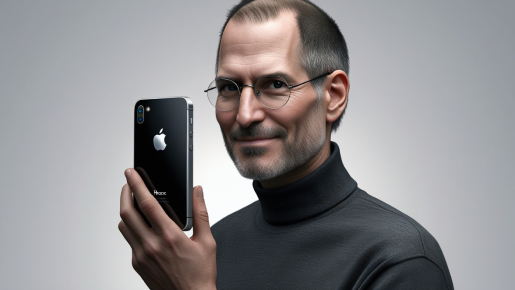One powerful patent can protect your invention — or wipe out your competition.
When Apple introduced the iPhone, it didn’t just change phones — it changed the rules of the game. Behind the sleek interface was a legal fortress: a patent that gave Apple a near-monopoly on how modern smartphones feel to use.
For startup founders, CTOs, and CEOs navigating the innovation space, this story holds a crucial lesson: technology doesn’t win markets — patents do.
📱How a Single Patent Defined the iPhone Era
In 2008, Apple secured a patent for the way the iPhone’s screen responds to gestures — not just simple taps, but scrolls, pinches, and swipes that felt like second nature.
Steve Jobs called it an obsession. He wanted the phone to “just work” with your hand. And more importantly, he made sure no one else could make it work the same way.
Soon after, Apple began filing lawsuits against Android device makers. Samsung. Motorola. HTC. Even Google wasn’t safe.
It became one of the most defining patent battles in tech history.
⚖️ Why Patent Strategy is a CEO-Level Priority
Too many startups file one patent and think they’re safe.
But Apple didn’t just patent the idea of a touchscreen. They patented how it works, how it reacts, and how it feels. That meant competitors had to change their designs — or pay to license Apple’s technology.
When your product is innovative, you’re not just creating features. You’re defining user experiences. And that’s what can — and should — be protected.
If you’re launching a tech product, it’s essential to:
- Secure early-stage patents to protect your core technology.
- Layer design and utility protection to cover both function and feel.
- Think globally from day one.
🧠 The Hidden Cost of Delaying Patent Filing
Here’s what many innovators don’t realize: waiting to patent your invention makes you vulnerable.
Once your product is launched or even shown publicly, your options begin to shrink. Competitors can reverse-engineer it. Investors may hesitate. And in some countries, you may lose the right to file altogether.
Protecting your IP early helps:
- Establish ownership before going to market.
- Attract investors by signaling long-term value.
- Avoid costly legal battles later.
📲 What If You Could Patent Your User Experience?
Can you protect how your app or device feels? In many cases — yes.
If your product’s interface is unique, intuitive, or solves a problem in a new way, it may qualify for both design and utility patents. But timing is everything. Miss the filing window, and your innovation could be free for anyone to copy.
🧩 Apple vs. Android
Apple’s lawsuit against Samsung wasn’t about the hardware. It was about the experience — the way a swipe snapped to a grid, the way scrolling slowed naturally, the fluidity of pinch-to-zoom.
That lawsuit led to:
- Billion-dollar settlements.
- Product redesigns.
- Entire UX teams rethinking how Android phones functioned.
All because Apple thought ahead and filed the right patents — early.
🚀 Your Innovation Deserves Protection That Scales
You might not be Apple (yet), but your idea is just as vulnerable.
Whether you’re building the next-gen app, AI tool, or consumer tech — your first line of defense isn’t a launch strategy. It’s a patent strategy.
📞 Let’s help you secure it. Book your free patent consultation with PatentYogi today.
We’ll help you:
- Identify what’s patentable.
- Map out international coverage.
- Avoid critical mistakes most inventors overlook.
Don’t let someone else define the rules of your invention. Own it before they do.
PS: What’s stopping you from filing a patent right now — time, cost, or just confusion?
👇 Drop a comment. Let’s simplify it together.

